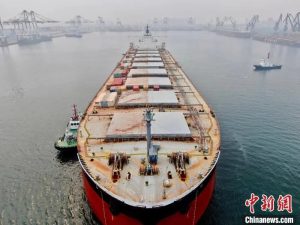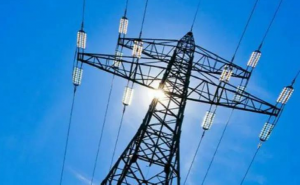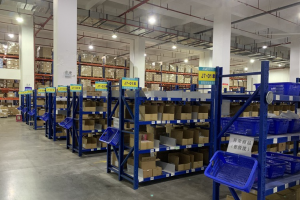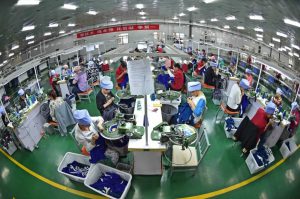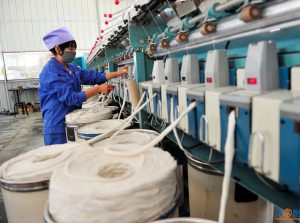
Electricity shortage is the protagonist of this round of crisis, and then coal shortage, oil shortage, gas shortage have emerged, accompanied by power rationing, panic buying gasoline, energy suppliers collapse and other phenomena, Europe and the United States of natural gas, thermal coal, electricity prices have hit a record high, we began to realize that the global energy dilemma.
How to view the current global energy dilemma? In Europe, natural gas accounts for a larger share of electricity generation than coal, which has sown the seeds for a sharp rise in natural gas prices amid the energy crisis, analysts said. The risk of blackouts around the world this winter is likely to increase, which could further push up energy prices and unleash a new wave of global inflation.
However, some economists hold a different view, saying that the global energy problem is mainly caused by the imbalance between supply and demand and will not last long. Foreign oil and gas prices will have a certain impact. However, the government can also take certain measures to respond.
In addition, under the background of the global energy crisis becoming more and more intense, part of public opinion will be “spearhead” directed at green electricity, once high hopes of green electricity became “carry the pot man”. In the future, can green electricity shoulder the heavy responsibility?
“The current global energy problem is mainly caused by a temporary imbalance between supply and demand.”
Global energy prices have been rising since the second half of the year. In America and Europe, gas prices accelerated, with IPE’s gas and thermal coal prices hitting record highs of 213p/tonne and $230 / tonne respectively on October 8th. Oil prices hit a post-2020 high of $82.56 a barrel on October 5. Affected by this, many countries in Europe and the United States to refresh the price record. At home, coal prices have also risen to record highs, which in turn has increased the cost of power generation and led to localised blackouts.
“This energy crisis revolves around fossil fuels such as natural gas, oil and coal, and is accompanied by global electricity shortages and rising electricity prices.” Citic Securities research report pointed out.
Why the current global energy dilemma?
Ming Ming of CITIC Securities believes that natural gas, as a relatively clean fossil energy, plays an important role in the energy transformation of many countries. Among them, the electricity production structure in Europe has been adjusted faster, and the proportion of renewable energy, nuclear energy and natural gas in the overall power generation structure is greater than that of coal, which also sowed the seeds for the sharp rise of natural gas prices in the energy crisis. Demand for natural gas in Europe is increasing as production activity recovers and seasonal gas use peaks. Demand for natural gas as a substitute for wind, hydropower and other electricity production in Europe, which has been weakened by more extreme weather this year, has been further boosted. In addition, geopolitical factors between Europe and Russia may also play a role in the shortage of Gas supplies in Europe. In the case of oil, shortages of other energy sources, such as natural gas and coal, are also expected to have a knock-on effect, supporting oil prices while demand is not expected to change in the short term.
However, Lin Boqiang, director of the China Institute of Energy Policy Studies at Xiamen University, had a different view when he spoke to the Beijing News. He argues that, on the whole, there is a global shortage of energy capacity. For example, if there is a shortage of oil, why did the Opec meeting call for oil production limits? The same is true in China. The recent phenomenon of power rationing is not because China is short of coal or electricity. Except for some areas, China’s coal and power production capacity is sufficient.
Lin boqiang further said that the current global energy problems are mainly caused by temporary imbalance between supply and demand. “At present, the economy is recovering from the impact of the epidemic. In particular, the demand for industrial production is strong, and the supply of energy and other raw materials cannot keep up, so there is a shortage of oil, gas and electricity. However, these short-term phenomena are not due to the shortage of production capacity, but due to the impact of the epidemic, transportation and other economic links have not fully recovered.”
How long will this energy crisis last?
The rising prices of energy products have caused power shortages around the world, affecting industrial production and household life. So how long will this energy crisis last?
Citic Securities Ming Ming team forecast that in the short term, the price of major energy products high difficult to change. “Rising electricity prices will increase the risk of regional blackouts this winter, which could further drive up energy prices and a new wave of global inflation.”
However, Lin boqiang believes that the current global energy shortage is mainly caused by the disruption of transportation and logistics systems by the epidemic, and these problems will gradually improve and be resolved as the epidemic recovers. “The current energy problems the world is facing are not going to last for long,” he said. “The current energy problems are far from being what we would call an energy crisis.” Lin boqiang said.
It is also worth paying attention to the impact of the global energy crisis on China. Ming Ming of CITIC Securities pointed out that in recent years, coal still dominates China’s energy structure, but its proportion is declining rapidly, while the proportion of petroleum products and natural gas is rising. China still has a certain degree of external dependence on natural gas, crude oil and other energy resources, and the degree of external dependence has been increasing in recent years. Therefore, the outbreak of the global energy crisis will also affect China’s production and residents’ activities to a certain extent. “The global energy crisis is expected to have an impact on the domestic industrial chain through raw material prices and electricity prices.”
Lin Boqiang also said that the current pricing power of global oil and natural gas prices lies abroad, and with the rise of global oil and natural gas prices, it will directly affect China’s oil and natural gas prices. However, he said the government can also take certain measures to deal with it. “For example, in order to prevent the cost of power generation companies from continuing to rise, the National Development and Reform Commission has introduced measures to reform the electricity market price, which can also increase coal capacity in Inner Mongolia, Shanxi and other places.”
The proportion of electricity generated by the hot installation is negligible, so whether green electricity can carry the big beam in the future
The global energy crisis is becoming more and more intense, part of the public opinion will be “spearhead” directed at the green electricity, once high expectations of the green electricity became “carry the pot man”.
On October 7th the Economist reported that low wind speeds in Europe, which have reduced renewable energy production, are also contributing to the crisis. The report further pointed out that European countries have embarked on a green energy transition, resulting in a long-term decline in investment in fossil fuels, resulting in a short-term energy crisis. Liaoning province also partly blamed a sharp drop in wind power production for its power shortfall from Sept. 23 to Sept. 25.
When the sky falls tall men stand on top of it. At present, the proportion of the whole energy system is not high, “size” is still small green electricity embarrassed big in fact, it is expected. More industry experts say that the nature of green electricity “depends on the weather” has not changed, and people’s high expectations for green electricity have become unbearable.
With the proposal of dual carbon target, China’s green electricity installation ushered in explosive growth.
According to statistics released by the National Energy Administration, 190 million kw of new power capacity will be installed in 2020, accounting for 9.5 percent of the total installed power capacity to 2.2 billion kW. Of the new installed capacity, hydropower 13.23 million kW, accounting for 3.4 percent, wind power 71.67 million KW, accounting for 34.6 percent, and solar power 48.2 million KW, accounting for 24.1 percent. Wind and solar power combined added 120 million kilowatts, accounting for about 63 percent of the increase, becoming the leading force in China’s power supply growth. At the same time, 55.9 million kw of new thermal power capacity will be installed in 2020, accounting for only 4.7 percent of the total.
Green power march in a big way, thermal power “retreat”. However, in terms of actual power generation, thermal power is still the ballast stone of domestic power generation, and the performance of wind power and photovoltaic power generation is not proportional to the total installed capacity.
In 2020, China’s thermal power generation accounted for 67.87 percent of the country’s total power generation, down 7.56 percent from 75.43 percent in 2014. In contrast, wind power and photoelectric power generation accounted for 6.12% and 3.42% respectively, accounting for 9.52% in total, less than 10%.
The contrast between the performance of green electricity and the booming installed capacity can also be seen from the “power rationing” incident in Liaoning Province. According to the Liaoning Provincial Department of Industry and Information Technology, the total installed wind power capacity in the three northeastern provinces reached about 35 million kilowatts, but after the cold air on Sept. 21, the output decreased significantly, accounting for less than 10 percent of the total installed wind power capacity. What’s more, according to the State Grid dispatch and Control center, at the peak of the summer, the 35 gigawatts of wind power installed in the northeast once produced a total of 34 gigawatts, almost nothing.
Lin Boqiang, director of the China Institute for Energy Policy Studies at Xiamen University, believes that despite the rapid development of photovoltaic and wind power in the past decade, their nature of “relying on the weather” has not changed. Pv at night can’t generate electricity, water and electricity is also depends on the season or the plentiful, catch up with the season, also need to bear the storage function, such as the output (output) may be sheared, wind power has been the industry known as “waste electricity”, small wind, the electricity demand big day of the electricity demand less capacity is larger at night.
Is it possible to blame green power for this “blackout”?
Lin boqiang believes that this argument is groundless. This time around the power rationing, more or thermal power generation inadequate. “New energy is too small, accounted for a negligible proportion, you put it (wind, light) all turn off no problem, volatility, indirect, wind power, photovoltaic shortcomings are there, but accounted for only 9%, so the current discussion of wind power photovoltaic on the impact of the lack of electricity some too hasty.”
The new energy industry is also opposed to the above views.
China’s electricity supply is still dominated by fossil fuels such as coal, and the problem of “power rationing” is mainly caused by the shortage of coal supply and demand and the upside down price of coal and power, tongwei Group, a silicon leading company, said in an interview with Beijing News shell Finance on October 11. In addition, the industry another leading longji shares to shell finance similar statements.
Although, at present, “switch off power rationing” has little to do with green electricity, but with the promotion of the dual carbon goal, can green electricity shoulder the big beam and shoulder the heavy responsibility?
Experts generally believe that in the future, green electricity consumption, transmission and distribution, fluctuation and other issues need the development of energy storage. Energy storage is the conversion of a form of energy that is harder to store into a technically easier and cheaper form for storage. At present, common energy storage methods include pumped storage, electrochemical energy storage, flywheel energy storage (new energy storage technology, still in the early stage of commercialization), hydrogen energy storage.











